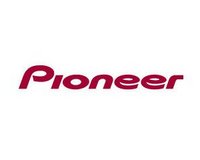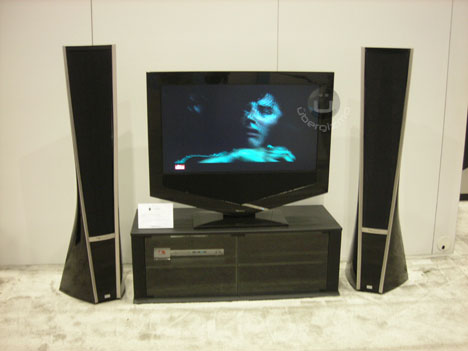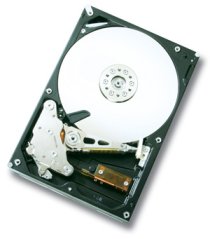CES 2007: Pioneer demos the future of plasma
 Pioneer made some bold claims on Sunday about its brand spanking new plasma technology that should shoo of those pesky LCD and SED screens that have been sniffing around its turf. We were taken into a back room of the the Pioneer to witness the spectacle. Here, Pioneer had stood two 60" TV side by side, one using the current system, and the new one next to it.
Pioneer made some bold claims on Sunday about its brand spanking new plasma technology that should shoo of those pesky LCD and SED screens that have been sniffing around its turf. We were taken into a back room of the the Pioneer to witness the spectacle. Here, Pioneer had stood two 60" TV side by side, one using the current system, and the new one next to it.
The first me thing that struck me was that while the TVs sat idle, with nothing showing on the screen, you could still see the faint glow of luminance on the older tech one. The new plasma screen, however, actually offers such dark blacks that you can't tell whether it is showing a blank screen or has been switched off.
We kicked things off with a demo movie designed to show off all of its new features, such as the contrast ratio (which apparently is so good it can't be measured with standard equipment) and the richer colours. Then it was time for the side by side comparison and it became clear quite how much difference the new system makes. The colours are so much more vivd, skintones are a lot more distinctint and of course blacks look quite considerably darker.
To demonstrate how much better the new contrast works, the lights were turned up and down, and it was only when lights came up quite a long way that you could even begin to see any effect on the new screen.
One thing I did notice was that the new plasma was perhaps a little too black, and the colours a little too deep, which meant that the demo started to gain an unreal quality to it. Of course, you're unlikely to ever watch anything that even remotely resembles what they showed on the demo, so it might be best to take the results of this comparison with a pinch of salt. However, as it currently stands, it looks like Pioneer has delivered on its promises.





 Intel plans to launch three quad-core processors on Monday, covering two Xeons for lower-end servers and one mainstream model for desktop computers, sources familiar with the plan said.
Intel plans to launch three quad-core processors on Monday, covering two Xeons for lower-end servers and one mainstream model for desktop computers, sources familiar with the plan said. Japan's Toshiba Corp. (6502.TO) said Friday it was independently designing a new boiling-water reactor, or BWR, for use in nuclear power plants.
Japan's Toshiba Corp. (6502.TO) said Friday it was independently designing a new boiling-water reactor, or BWR, for use in nuclear power plants. Last year, Hitachi Global Storage Technologies predicted hard-drive companies would announce 1 terabyte drives by the end of 2006. Hitachi was only off by a few days.
Last year, Hitachi Global Storage Technologies predicted hard-drive companies would announce 1 terabyte drives by the end of 2006. Hitachi was only off by a few days. 
 Samsung's dual-sided LCD panels
Samsung's dual-sided LCD panels  Samsung, the world's largest seller of televisions, will introduce at next week's Consumer Electronics Show a new line of rear-projection liquid crystal display televisions that will not be much thicker than flat-panel TVs but will cost about 30 percent less.
Samsung, the world's largest seller of televisions, will introduce at next week's Consumer Electronics Show a new line of rear-projection liquid crystal display televisions that will not be much thicker than flat-panel TVs but will cost about 30 percent less. It was bound to happen: In the mess known as the high-def format wars, eventually, it was clear a manufacturer would cross party lines and release a single player capable of handling both Blu-ray Discs and HD DVD discs. The question wasn't if; it was a question of when.
It was bound to happen: In the mess known as the high-def format wars, eventually, it was clear a manufacturer would cross party lines and release a single player capable of handling both Blu-ray Discs and HD DVD discs. The question wasn't if; it was a question of when. 




